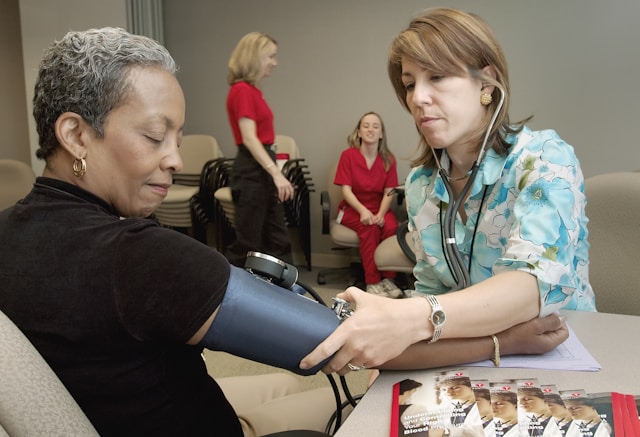Introduction
When it comes to heart disease, some common risk factors get a lot of attention: high blood pressure, high cholesterol, smoking, lack of physical activity, obesity, and contributing health conditions, such as diabetes.
However, some demographic factors also increase one’s risk for heart disease. These are important to consider for managing your risk and taking your heart health seriously.
Risk Factors Based on Demographics
Research has shown that several demographic factors increase the risk of heart disease in the US. These include:
- Age. As people get older, their risk increases.
- Gender. Men tend to have a higher risk than premenopausal women, but this risk evens out after menopause.
- Family history. Having close relatives with heart disease can increase your risk.
- Race or ethnicity. Certain racial and ethnic groups, such as African Americans, Hispanics, and American Indians, have a higher risk.
- Socioeconomic factors. Socioeconomic status is associated with a higher risk due to factors such as limited access to healthcare, unhealthy diet, lack of physical activity, and increased stress.
Risk Factors Associated with Where You Live
Location is another major contributor to heart disease. Studies have shown that rural areas in the US experience higher rates of heart disease and related deaths compared to densely populated (urban) areas. This can be attributed to several factors, as highlighted by studies published by the National Library of Medicine (NLM) and the National Institute of Health (NIH):
- Healthcare access and use. Rural residents often face significant barriers to accessing healthcare, including a shortage of healthcare providers and facilities or transportation issues. This limited access can delay diagnosing and treating heart conditions, leading to worse outcomes. Patients with heart failure in rural areas are also less likely to utilize emergency and hospital services, which could contribute to higher mortality rates.
- Lifestyle. Higher proportions of tobacco smoking, obesity, and sedentary activity have been observed in rural areas.
- Socioeconomic status. Lower socioeconomic status, which is more prevalent in rural areas, is associated with higher heart disease mortality due to factors such as employment, income, insurance, and the ability to receive treatment in a specialized hospital.
These factors collectively contribute to the higher mortality rates observed in rural areas. Adults living in rural areas have a 19% higher risk of developing heart failure compared to those living in urban areas.
Heart Health Screening Services and Resources
Some Americans can access free health screenings for heart disease through various programs and services:
- Dare to C.A.R.E. Program. This is a free heart and vascular screening and education program offered to local communities through collaboration with the Heart Health Foundation and participating hospitals and organizations.
- Medicare Part B. For those enrolled in Medicare, cardiovascular screening blood tests are covered once every 5 years at no cost if the healthcare provider accepts assignment.
- CVS Health. During National Women’s Health Week in each year, CVS Health offers no-cost heart health screenings at its MinuteClinic locations. CVS also offers a range of other affordable heart health-related screening options year-round.
Individuals need to consult with healthcare professionals to understand their risk factors and to take advantage of screening opportunities where available. Additional guidelines and recommendations for heart health screenings can also be found on the American Heart Association’s website.
Conclusion
Understanding your risk for heart disease and the resources available to you to prevent, diagnose, and monitor your heart health is essential.
Knowing the symptoms is also empowering for knowing when you should seek out a healthcare professional and a heart health screening. For more detailed information, visit our post Heart Disease: What are the Symptoms?

